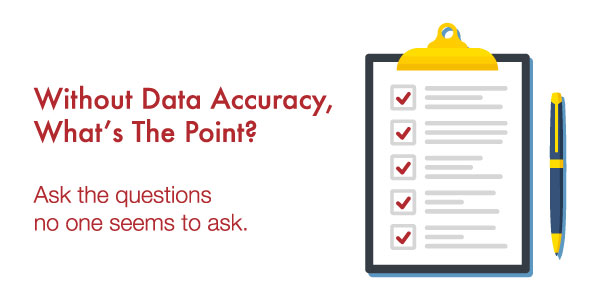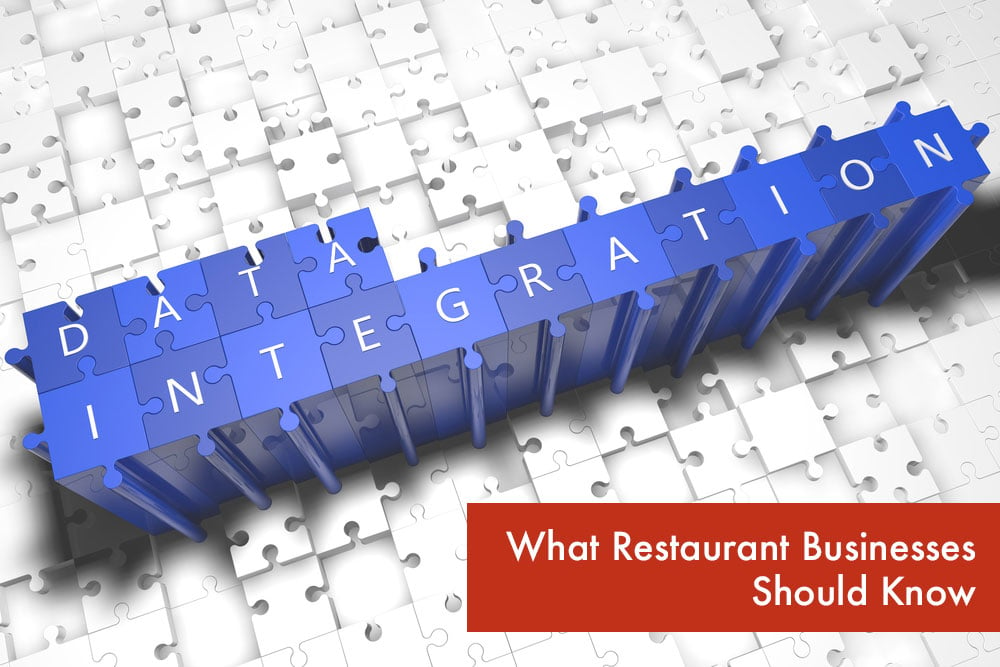What's data integration and how is it leveraged?
Data integration is a process in which heterogeneous data (finance, marketing, operations, sales, customer, mystery shop, cleanliness, inventory, etc.) is organized and cleansed into a data warehouse. It is leveraged when it's accessible through a platform that allows it to be leveraged together to form meaningful and actionable reports.
What are some challenges restaurants face today?
Restaurant companies are drowning in data about their customers, operational execution, internal business processes, finances, suppliers, partners, and competitors. Many can't leverage this flood of data and convert it to actionable information for growing revenue, increasing profitability, and efficiently operating the business.
Why? Well, there are multiple reasons, here's two that come to mind:
- Failure to identify specific business cases that need to be addressed today and tomorrow. Starting by identifying the business challenges you’re looking to solve will help you understand the data needed to solve those problems, which, in turn, will help you find the right tool(s) to help you resolve these issues.
- There is this notion that I like to describe as the Silver Bullet Solution - it's where someone thinks they can find one solution that addresses all of their restaurant business needs, including reporting. I see this happening more frequently as restaurant companies respond positively to the idea that the providers of the various transactional systems they use such as Point of Sale (POS) and Back of House (BOH), etc., to operate and manage their businesses are also comprehensive reporting solutions. But they’re not.
Don’t get me wrong, these systems do a great job of what they’re intended to do - quickly capture and record the transaction information as it’s entered into the system. They even create a number of static reports, many of which are useful.
However, contrary to what many vendors claim (many list Business Intelligence (BI) in their marketing materials) restaurant companies using these tools for reporting come to realize, over time, that while each system they selected performs its specific task very well, the reports they provide are very limited, often times down to just the data it generates. This will leave many of your most pressing questions unanswered. To answer complex business questions, you'll need to integrate data from other systems used in your restaurants.
How to put your restaurant business in a better position
A great start is to craft a list of business needs and determine what custom reports your company needs. Shop around and demo data management and reporting solutions that will allow you to bring together the data required to address the needs you've identified.
Your reporting solution should include many of the basics like Key Performance Indicators, Dashboards, Sorting, Filtering, Drilling and Visualizations and making sure the solution comes with a data model that's crafted to support the many types of data collected in the restaurant industry.
If you have to create your own data warehouse and then craft the data model to support your data you'll be months in development and tens to hundreds of thousands of dollars invested before the first report is even created.
Make sure the solutions you demo support two important capabilities:
- Ad Hoc Report Writer
- Can integrate data you have today and tomorrow
It’s these two capabilities that are going to allow you to go above and beyond in gaining insight into your business. You'll see not only what happened, which is where most reporting solutions stop, but also why it happened so you can take steps to repeat as necessary or stop it from happening again.
Having all your data in one central repository is empowering. Not only does it save time because now you don’t have to jump from one system to another over and over again. Combining data and crafting custom reports from disparate sources with an ad hoc report writer can shed light on issues you couldn’t easily see before, if ever. i.e., a custom-crafted report containing your sales, labor, and mystery shopper scores will provide much more insight than simply looking at sales, labor or shopper scores alone.
Now imagine being able to quickly and easily assemble this report (less than 1 minute) and get a fact-based answer to that question "Why is that?" It makes you kind of giddy, doesn’t it?
BI solutions were once the domain of IT and a few analysts. This service-request style is quickly giving way to a more nimble self-serve approach. Limits on the number of users that can access your data can hamper your ability to make the most out of your investment not to mention in many cases cost a lot more as you obtain each new user license.
To avoid this, choose a system that’s flexible and can scale with you as your needs change and your organization grows. Being able to bring in data from a wide variety of systems will help ensure that you won’t need to be shopping for a new BI tool before you receive a return on the investment you just made.
Talk to your vendor
Ask your vendors (POS, BOH, Loyalty, Financial, etc.) if they can bring in data from another company’s system (Loyalty, Mystery Shop, Customer Feedback, etc.) and allow you to report on that activity through their system's reports.
Most will say "no" because that’s not the business they’re in but it's good to understand your current vendor's capabilities when it comes to data management and reporting. Most vendor platforms are created to quickly record orders, inventory, invoices, labor punch and a host of other items, not capture and produce reports using data from the half-dozen other systems used throughout your business. Sometimes they provide valuable insights but almost never as it pertains to other vendor data.
Grab this helpful Vendor Checklist - Click Here.
Why is data integration important?
Successful restaurateurs need to have extensive KPIs and they must be able to quantify everything. Data scrutiny and analysis is an ongoing process. Restaurant CEO's need to have their restaurant information distributed and analyzed by different personnel that will empower their businesses to increase revenue and profit, and improve customer service. However, operators can be misled by information received solely from their POS systems (sales, reservations) or BOH systems (inventory, food costing, labor scheduling). They need to be able to get a look at the bigger picture.
For example, we may be pleased if we see increased sales when we look at monthly or quarterly numbers but upon a closer look, we may discover that they are the result of a specific promotion that was offered at substantial discounts. We dig deeper, drill down, and begin to understand that although sales volumes may have seemed high, actual profits may be lower or nonexistent. We would not be able to tap into this level of granularity if we only relied on information solely received from a POS or a BOH system. The results would be inconclusive and therefore data integration has to include all sources.
How competition is creating new business tactics
The restaurant industry is one of the most competitive. In order to stand out, executives need to make smart choices. It used to be that restaurants depended on instincts and best practices to make strategic decisions for their business. Nowadays, they can have the slicing and dicing tools to make smart, tactical choices to maximize efficiency. This is called predictive analytics. Predictive analytics allows forecasting of future possibilities and inclinations based on raw, unbiased data. But the data has to come from all possible sources in order to paint the most accurate picture.
Restaurant executives examine sales and look for patterns. Which items were sold and why are they more popular on certain days or hours? By determining the root causes and explanations that drive revenue and, by using predictive analytics, they can predict next month’s or next quarter’s revenue based on these causal elements.
Restaurant operators are learning that they can make better, more enlightened choices to drastically improve performance by applying insights from advanced analytics. They are able to:
- Improve operational efficiencies by increasing speed of service and staff stores based on demand
- Drill down into different dayparts for a better understanding of revenue trends
- Track and take action against fraudulent activities
- Prevent overtime before it happens
- Measure the success of promotions and marketing
- Distribute all information that can help benchmark performance
- Apply all the knowledge to deliver surprising ROI and growth opportunities
Summary
The information from your POS, accounting, inventory, scheduling methods, and marketing initiatives needs to be merged and dissected in order to gain greater insight into your restaurant business. Looking at the whole picture in greater detail will increase your restaurants’ profitability.
Invest some time to find the right solution for your restaurant business that will help you reduce costs, improve marketing initiatives and maximize your ROI. Some cloud-based solutions can help you understand what big data is and how you can collect, measure and use it to make improvements to your restaurant operations. By using predictive analytics, restaurants can suggest actionable recommendations to change business operations and strategies to improve profitability.
Grab this helpful Vendor Checklist - Click Here

About Mirus:
Mirus provides services in data management and solutions in custom reporting for the restaurant industry.
Learn more at mirus.com
If you enjoyed this blog, please share it by using the social buttons at the top of the page and leave your thoughts in the comment section below.









.png?width=50&height=50&name=Mirus%20Logo%20(1).png)